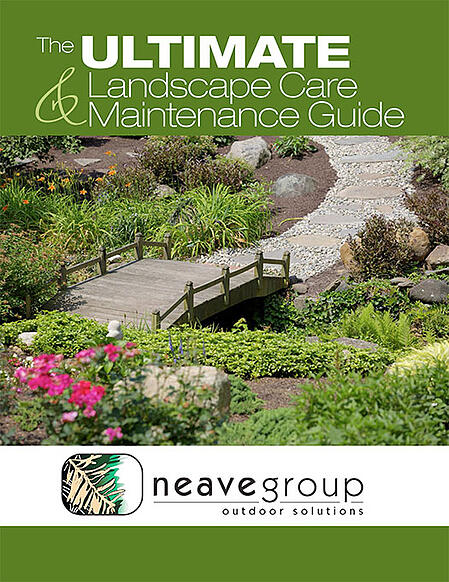By late summer, plants in your New York, Connecticut and New Jersey landscape have weathered heat, humidity, dry spells and downpours. Environmental conditions can take a toll on plant health. Even trees and shrubs on well-maintained properties can present with these five diseases: leaf spot, powdery mildew, root rot, boxwood blight and rust.
Consistent tree and shrub care will help prevent disease, and when a landscape professional regularly services your property, those visits are opportunities to check up on plants to be sure they’re not developing symptoms. Here are some of the signs our specialists look for on plants to identify typical diseases we find in your community—and the strategies we implement to restore plants and trees and keep your landscape looking its best.
#1 Leaf Spot
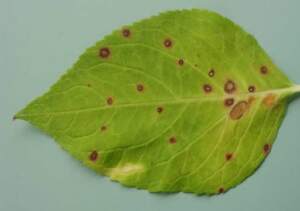 Leaf spot is the product of various fungi that create brown spots on leaves that can range in size and shape. This is one of the most prevalent plant diseases, according to the Connecticut Agricultural Experiment Station in New Haven, CT. It affects a range of deciduous and evergreen trees, shrubs, groundcovers and plants.
Leaf spot is the product of various fungi that create brown spots on leaves that can range in size and shape. This is one of the most prevalent plant diseases, according to the Connecticut Agricultural Experiment Station in New Haven, CT. It affects a range of deciduous and evergreen trees, shrubs, groundcovers and plants.
Leaf spot encompasses several disease strains—black spot of rose and didymellina leaf spot of iris are two.
Leaf spot symptoms include blotchy, dead areas or spots and can result in premature leaf drop—so you’re likely to wonder whether fall cleanup is just around the corner.
How do we deal with treating leaf spot? First, proper cultural practices like regular maintenance pruning, fertilization and maintaining healthy soil can prevent disease. When watering plants, direct moisture to the plant base and roots where soil can absorb the moisture rather than spraying over foliage, which can potentially contribute to disease formation. Many times, foliage diseases like leaf spot are not serious and continuing with a plant health care regimen will prevent shrubs and trees from declining. However, in serious cases, fungicide treatments can be applied to support disease control.
#2 Powdery Mildew
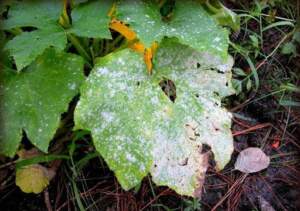 This fast-spreading disease is a usual suspect, and as the name implies, it appears as a white powder that forms on plant leaves and stems. You’ll usually find initial powdery mildew growth on the surface of a leaf, and if symptoms worsen you can end up with premature leaf browning. Your plants can lose their leaves early, as well.
This fast-spreading disease is a usual suspect, and as the name implies, it appears as a white powder that forms on plant leaves and stems. You’ll usually find initial powdery mildew growth on the surface of a leaf, and if symptoms worsen you can end up with premature leaf browning. Your plants can lose their leaves early, as well.
Because powdery mildew generally develops in the mid-to-late growing season, now is the time to watch for this common landscape disease.
Plants that are especially susceptible include dogwood, roses, rhododendrons, zinnia, phlox, lupine and monarda.
Prevent powdery mildew by making sure you do not place plants too closely in the landscape, which can trap moisture and prevent air circulation. Like leaf spot, powdery mildew is a foliage disease that is best managed by following a plant disease management program. Remove fallen leaves and debris from landscape beds. Avoid overhead irrigation, as well. Ideally, pesticides and controls should be applied to plants before symptoms develop as a preventive.
#3 Root Rot
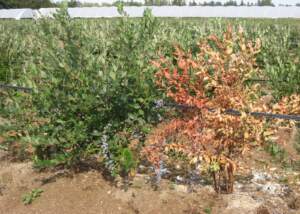 If you have clay soil in beds that tend to collect water, those are prime conditions for root or crown rot. Because you can’t see a plant’s roots, you’ll notice symptoms like yellowing leaves, wilting, dropping and dieback of stems and branches.
If you have clay soil in beds that tend to collect water, those are prime conditions for root or crown rot. Because you can’t see a plant’s roots, you’ll notice symptoms like yellowing leaves, wilting, dropping and dieback of stems and branches.
Overall, the plant will not look healthy. You might also notice a plant is not growing as it should. In the worst cases, a plant can suffer to the point it needs to be replaced.
Plants under stress are more susceptible to root rot. So, the best way to prevent the disease is to prevent drought conditions or flooding. (In other words, avoid extremes in the landscape bed.) If a plant is affected, a lawn care professional will remove the diseased areas, which can include pruning roots and removing stumps. Pesticide applications can help prevent root rot.
#4 Boxwood Blight
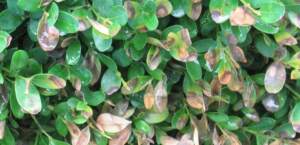 This disease starts presenting when leaves on boxwood plants develop dark or brown spots. You’ll also notice some white spores on the undersides of leaves, which is where the fungus lives. Narrow, black streaks develop on green stems, and a careful eye might detect fuzzy mazes on those cankers. Diseased plants begin to defoliate from bottom to top.
This disease starts presenting when leaves on boxwood plants develop dark or brown spots. You’ll also notice some white spores on the undersides of leaves, which is where the fungus lives. Narrow, black streaks develop on green stems, and a careful eye might detect fuzzy mazes on those cankers. Diseased plants begin to defoliate from bottom to top.
Diseased plants should be removed from landscape beds to avoid infecting healthy boxwoods. Fungicides can protect boxwoods from blight.
#5 Rust
If you see tiny, rust-colored spots on leaves, those tarnishes could be the first telltale signs of rust. Rust markings can vary and include orange, rusty-brown, brown-yellow, purple and red. The spots grow and form pustules that burst and release disease spores. Wind and water can carry the spores to nearby plants, causing rust to spread. Rust can prevent proper plant growth and result in dead branches, and yellowing leaves that drop early.
Rust typically settles in during hot, humid conditions.
To prevent rust, avoid overwatering plants and direct irrigation toward plant roots and soil to prevent foliage from getting wet. Installing drip irrigation in landscape beds can be helpful for avoiding this and other common plant diseases. Affected leaves should be removed—but be sure not to remove more than 1/3 of a plant’s leaves at one time. Fungicides can provide some protection against rust.
Schedule Plant Health Care to Prevent Further Damage
The best way to avoid these common landscape plant diseases is by adopting proper cultural practices—smart watering, correct pruning, soil health, fertilization and thoughtful use of appropriate fungicides and pesticides. At Neave Landscaping, our team of specialists is trained to diagnose plant diseases and, most importantly, to assess a site for issues that could contribute to disease.
Get a free lawn assessment or contact us for more information. We want to help keep your landscape healthy and be a resource you can trust. Call us in Westchester at 914-271-7996, Hudson Valley at 845-463-0592, and Connecticut at 203-212-4800. Or, fill out our contact form and we’ll get in touch with you.

